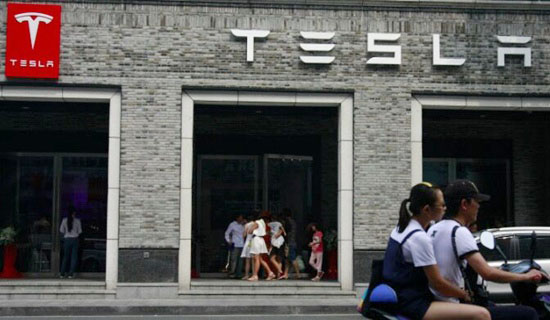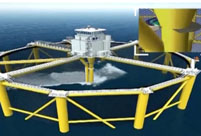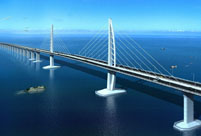


Tesla confirmed on June 22 that it is in talks with Shanghai's government about the possibility of opening the former's first factory in the world’s largest auto market. The electric-car manufacturer said in an emailed statement that it expects to “more clearly define its plans for producing electric vehicles in China by the end of the year.”
Under the current regulations, a local partner is required for Tesla to establish a manufacturing center in China.
“Tesla is deeply committed to the Chinese market, and we continue to evaluate potential manufacturing sites around the globe to serve the local markets,” Tesla said in the statement.
Tesla didn’t mention with whom it will partner, and speculation lingers after two rumored candidates officially denied that they had any contact with Tesla. Shanghai Lingang Holdings Co. Ltd. dismissed previous media reports late on June 22, saying that the Lingang development zone will not be home to the upcoming China factory, since it has neither been in contact with Tesla nor reached a deal on a factory. Shanghai Electric Group followed with a similar statement.
Tesla’s announcement came days after U.S. automaker Ford announced plans to shift some production of its Focus model to China starting in 2019, a move that was deemed an act of defiance against the Trump administration's “America first” doctrine.
U.S. trade representative Robert Lighthizer said on June 22 that he was troubled by Ford’s move, and vowed to take countermeasures if the shift was planned for non-economic reasons. Tesla, meanwhile, promised that most of its production will stay in the United States, its most important market which provided $4.2 billion of the company's $7 billion 2016 revenue. China narrowed the gap last year after sluggish sales throughout 2015.
In a document filed with the U.S. Securities and Exchange Commission (SEC), Tesla recognized that the Chinese market contributed over $1 billion in 2016, with at least 11,000 vehicles ordered. The new factory would theoretically boost Tesla's China sales by eliminating a 25 percent import tariff that made its vehicles pricier in China than in U.S. markets.
 Magnificent view of Nansha Islands in South China Sea
Magnificent view of Nansha Islands in South China Sea Aerial view shows scenery in Hong Kong
Aerial view shows scenery in Hong Kong China builds world’s first offshore fish farm
China builds world’s first offshore fish farm A Foreigner's Chinese Dream and Love for China
A Foreigner's Chinese Dream and Love for China 5,000-year-old Chinese beer recipe goes down a storm in US
5,000-year-old Chinese beer recipe goes down a storm in US World's first driverless rail transit system unveiled in Hunan
World's first driverless rail transit system unveiled in Hunan World's largest cluster of Miao villages in Guizhou
World's largest cluster of Miao villages in Guizhou Daily life in Kashgar, China's Xinjiang
Daily life in Kashgar, China's Xinjiang Top 10 Chinese tech and engineering marvels
Top 10 Chinese tech and engineering marvels The power of 'She' in China
The power of 'She' in China Seven most beautiful art museums in China
Seven most beautiful art museums in China Top 10 European patent applicants in 2016
Top 10 European patent applicants in 2016 Chasing the world's prettiest flowers
Chasing the world's prettiest flowers Sino-US ties must avoid NK nuke trap
Sino-US ties must avoid NK nuke trap Beijing’s female-only mosque attracts more and more young women
Beijing’s female-only mosque attracts more and more young women Near-space test shows the bright future of China’s solar-powered drone
Near-space test shows the bright future of China’s solar-powered drone Let’s get digital: Domestic fitness start-ups use Internet for promotion
Let’s get digital: Domestic fitness start-ups use Internet for promotionDay|Week